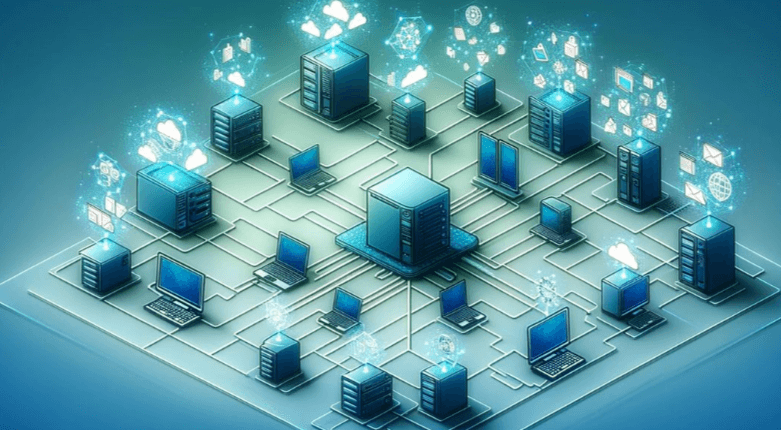
How are edge computing and IoT converging to reshape data processing and real-time analytics?
Introduction
The convergence of edge computing and the Internet of Things (IoT) is transforming the landscape of data processing and real-time analytics. This fusion is creating new possibilities for industries by enhancing the speed, efficiency, and scalability of data management. In this article, we will delve into the mechanisms of this convergence, its implications for various sectors, and the potential future developments that could further revolutionize the way we handle data.
Understanding Edge Computing and IoT
Edge computing refers to the practice of processing data near the data source rather than relying on a centralized data-processing warehouse. This method reduces latency and bandwidth usage, allowing for faster decision-making and real-time data analytics. By distributing computing resources to the edge of the network, closer to where data is generated, edge computing minimizes the delay between data generation and processing.
IoT: The Network of Connected Devices
The Internet of Things (IoT) encompasses a vast network of interconnected devices that collect and exchange data. These devices range from simple sensors to complex machinery, all contributing to the creation of a data-rich environment. IoT devices generate an immense volume of data, necessitating efficient data processing methods to derive actionable insights.
The Intersection of Edge Computing and IoT
The integration of edge computing with IoT significantly enhances data processing efficiency. IoT devices generate continuous streams of data, and processing this data at the edge reduces the burden on centralized servers. This local processing capability enables quicker responses and reduces the need for constant data transmission to the cloud, conserving bandwidth and lowering operational costs.
Real-Time Analytics: A Game Changer
Real-time analytics is crucial for applications requiring immediate insights, such as autonomous vehicles, smart manufacturing, and healthcare monitoring. Edge computing enables real-time analytics by processing data instantaneously at the source. This immediacy is vital for applications where delays can result in critical failures or missed opportunities.
Scalability and Flexibility
Combining edge computing with IoT offers unparalleled scalability and flexibility. As IoT networks expand, the demand for scalable data processing solutions grows. Edge computing facilitates this scalability by allowing the addition of new devices and processing nodes without overburdening a central system. This distributed approach ensures that the network can handle increasing data volumes efficiently.
Practical Applications Across Industries
In smart manufacturing, the convergence of edge computing and IoT is driving innovations in predictive maintenance, quality control, and process optimization. Edge devices analyze data from machinery in real-time, detecting anomalies and predicting failures before they occur. This proactive approach minimizes downtime and enhances overall productivity.
Healthcare and Remote Monitoring
The healthcare sector benefits immensely from the integration of edge computing and IoT. Remote monitoring devices collect patient data continuously, and edge computing enables real-time analysis of this data. Immediate insights facilitate timely interventions, improving patient outcomes and reducing the strain on healthcare facilities.
Autonomous Vehicles
Autonomous vehicles rely heavily on real-time data processing for safe and efficient operation. Edge computing processes data from sensors and cameras within the vehicle, allowing for rapid decision-making without relying on cloud connectivity. This autonomy is crucial for navigating complex environments and ensuring passenger safety.
Energy Management
In the energy sector, smart grids and IoT-enabled devices monitor and manage energy consumption in real-time. Edge computing processes data locally, optimizing energy distribution and reducing wastage. This efficiency is essential for sustainable energy management and minimizing environmental impact.
The Future of Edge Computing and IoT
The future of edge computing and IoT lies in the integration of advanced AI and machine learning algorithms. These technologies enhance the capabilities of edge devices, enabling more sophisticated data analysis and decision-making. As AI models become more efficient, edge devices will handle increasingly complex tasks, further reducing the need for centralized processing.
Security and Privacy Considerations
As the number of connected devices grows, ensuring the security and privacy of data becomes paramount. Edge computing offers enhanced security by limiting data transmission to the cloud, reducing the risk of data breaches. Implementing robust encryption and authentication mechanisms at the edge ensures data integrity and confidentiality.
Edge-to-Cloud Synergy
While edge computing offers numerous advantages, the synergy between edge and cloud computing is essential for comprehensive data management. Critical data processed at the edge can be aggregated and analyzed in the cloud for broader insights and long-term storage. This hybrid approach leverages the strengths of both paradigms, creating a balanced and efficient data processing ecosystem.
Overcoming Challenges
One of the primary challenges in the convergence of edge computing and IoT is interoperability. With a multitude of devices and platforms, ensuring seamless communication and data exchange is complex. Establishing industry standards and protocols is crucial for fostering interoperability and enabling the smooth integration of diverse systems.
Infrastructure and Deployment Costs
Deploying edge computing infrastructure requires significant investment in hardware and software. For widespread adoption, reducing these costs is essential. Innovations in hardware design and the development of cost-effective edge solutions will drive the scalability and affordability of edge computing technologies.
Skillset and Training
The successful implementation of edge computing and IoT solutions requires a workforce skilled in these technologies. Investing in training and education programs is vital for equipping professionals with the necessary expertise. Bridging the skills gap ensures that organizations can fully leverage the potential of edge computing and IoT.
FAQs
What is edge computing?
Edge computing involves processing data near the data source rather than relying on a centralized data-processing warehouse. This method reduces latency and bandwidth usage, enabling faster decision-making and real-time data analytics.
How does IoT generate data?
IoT devices collect and exchange data through sensors and interconnected networks. These devices generate continuous streams of data that require efficient processing to derive actionable insights.
Why is real-time analytics important?
Real-time analytics is crucial for applications requiring immediate insights, such as autonomous vehicles, smart manufacturing, and healthcare monitoring. It allows for quick decision-making and immediate responses to changing conditions.
What are the benefits of combining edge computing and IoT?
Combining edge computing and IoT enhances data processing efficiency, enables real-time analytics, offers scalability and flexibility, and supports practical applications across various industries, including manufacturing, healthcare, and energy management.
What challenges exist in the convergence of edge computing and IoT?
Challenges include interoperability, infrastructure and deployment costs, and the need for skilled professionals. Overcoming these challenges requires establishing industry standards, reducing costs, and investing in training programs.
What is the future of edge computing and IoT?
The future involves advancements in AI and machine learning, improved security and privacy measures, and the synergy between edge and cloud computing for comprehensive data management.
Conclusion
The convergence of edge computing and IoT is reshaping data processing and real-time analytics, driving efficiency and innovation across industries. By enhancing data processing efficiency, enabling real-time analytics, and offering unparalleled scalability, this fusion is revolutionizing how we manage and analyze data. As technology advances, the continued integration of edge computing and IoT promises to unlock new possibilities and further transform our digital landscape.




